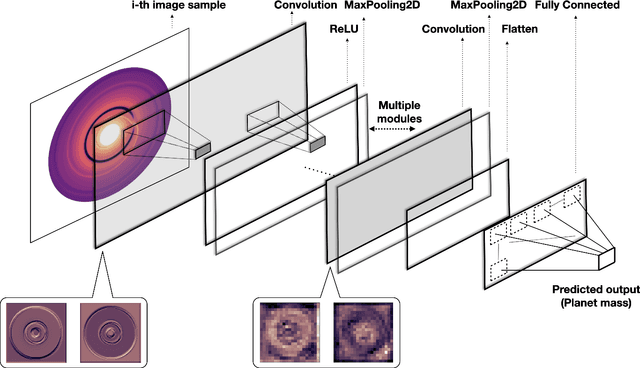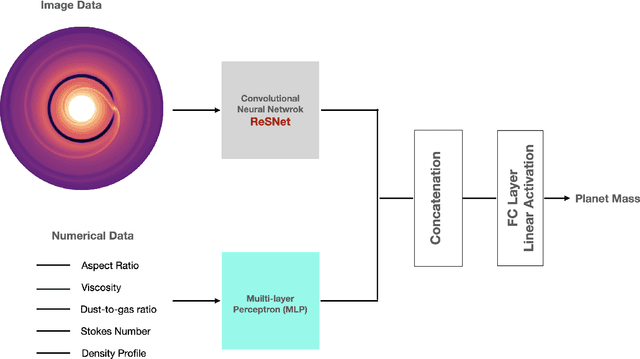Cassandra Hall
Locating Hidden Exoplanets in ALMA Data Using Machine Learning
Nov 17, 2022Abstract:Exoplanets in protoplanetary disks cause localized deviations from Keplerian velocity in channel maps of molecular line emission. Current methods of characterizing these deviations are time consuming, and there is no unified standard approach. We demonstrate that machine learning can quickly and accurately detect the presence of planets. We train our model on synthetic images generated from simulations and apply it to real observations to identify forming planets in real systems. Machine learning methods, based on computer vision, are not only capable of correctly identifying the presence of one or more planets, but they can also correctly constrain the location of those planets.
DPNNet-2.0 Part I: Finding hidden planets from simulated images of protoplanetary disk gaps
Jul 19, 2021



Abstract:The observed sub-structures, like annular gaps, in dust emissions from protoplanetary disk, are often interpreted as signatures of embedded planets. Fitting a model of planetary gaps to these observed features using customized simulations or empirical relations can reveal the characteristics of the hidden planets. However, customized fitting is often impractical owing to the increasing sample size and the complexity of disk-planet interaction. In this paper we introduce the architecture of DPNNet-2.0, second in the series after DPNNet \citep{aud20}, designed using a Convolutional Neural Network ( CNN, here specifically ResNet50) for predicting exoplanet masses directly from simulated images of protoplanetary disks hosting a single planet. DPNNet-2.0 additionally consists of a multi-input framework that uses both a CNN and multi-layer perceptron (a class of artificial neural network) for processing image and disk parameters simultaneously. This enables DPNNet-2.0 to be trained using images directly, with the added option of considering disk parameters (disk viscosities, disk temperatures, disk surface density profiles, dust abundances, and particle Stokes numbers) generated from disk-planet hydrodynamic simulations as inputs. This work provides the required framework and is the first step towards the use of computer vision (implementing CNN) to directly extract mass of an exoplanet from planetary gaps observed in dust-surface density maps by telescopes such as the Atacama Large (sub-)Millimeter Array.
 Add to Chrome
Add to Chrome Add to Firefox
Add to Firefox Add to Edge
Add to Edge